October 7, 2021
24 Open-Ended Sales Engagement Questions to Close Deals Faster

- Open-ended vs. close-ended sales engagement questions
- Mistakes to avoid when asking sales engagement questions to prospects
- Sales engagement questions to ask your prospects
- How to get more responses to your sales engagement questions
- Using open-ended sales questions as part of sales engagement
- Frequently asked questions about open-ended sales engagement questions
It’s a familiar story: you have loads of great prospects and some promising deals in your pipeline but they seem to take forever to progress and many simply fall through the cracks.
A few deals lost or delayed can make the difference between crushing your targets—or falling short for the quarter. How can your sales team engage your customers better to get deals moving faster?
Between making calls, sending emails, and giving demos (not to mention, reflecting all this in the CRM) your busy AEs have limited time. They need to make better use of the limited time they spend with prospects and the easiest way to do that is to start asking better questions.
Even the best sales reps can struggle to find the perfect qualifying and discovery questions, while even the most process-oriented rep can miss something. Having these questions outlined and written down to follow as part of your sales process can make sure that you cover all your bases.
In this article, you’ll get 24 open-ended sales engagement questions that have been shared with us by top sales performers. These questions will:
Open-ended vs. close-ended sales engagement questions
You likely know the value of a good open-ended question. But before we look at some great open-ended sales engagement questions, let’s quickly review how they differ from closed-ended questions and why they’re so powerful.
According to the Pew Research Center, open-ended questions are “where respondents provide a response in their own words”, versus a closed-ended question “where (respondents) are asked to choose from a list of answer choices.” In the case of the latter, that can mean simply stating “yes” or “no”.
Asking a list of closed questions can make your prospect feel like they’re being quizzed rather than having a business conversation. Open questions are more conversational and personable, helping you to build rapport with your prospects. They’re more likely to uncover detailed information, including details you might not have thought to ask about.
Related post: 8 Bold B2B Selling Techniques to Help You Close That Deal
Mistakes to avoid when asking sales engagement questions to prospects
Asking open-ended sales engagement questions is a valuable skill for account executives to develop. According to the experts we spoke to, some common mistakes include:
Sales engagement questions to ask your prospects
We interviewed a group of top-performing sales managers to identify several categories of open-ended sales engagement questions deemed most powerful during the sales process:
- Rapport building questions
- Qualifying questions
- Discovery and need-based questions
- Personal pain-related questions
- Objection-based questions
- Next step questions
Rapport-building questions
People buy from people, so forming a personal, human connection with the person you’re selling to is extremely valuable. That’s easier said than done on a first call, though—especially cold—so having some tried and trusted open rapport-building questions will get you off to a good start.
Some of these might be better left for later in the conversation (opening a cold call by asking for restaurant recommendations in their city might have the opposite effect). Once you get them talking, though, showing interest like this is a great way to build a relationship that goes beyond just selling.
Here are some good questions to help you build rapport with your prospects:
1. “I saw you worked at/studied at ___. What was that like?”
Odds are, your prospect is on LinkedIn, or maybe a prolific Twitter user. This can be a great opportunity to build rapport, particularly if you find a shared interest or connection. Perhaps you attended university in the same state or worked at the same company in the past. If you don’t have any obvious shared experiences, look for things that interest you and ask about one of those.
For example, you could say “I saw you used to work at Microsoft. I’m fascinated to know… what was that like?” Get creative and be sincere. Nobody wants to open up and share their experiences if they feel your motivations are cynical. It could be as simple as seeing a picture of them with their dog and sharing that you also have a dog. Don’t overthink it.
2. “I read your post about ____. What do you think about ___?”
Like the previous question, you can use prospects’ social media to find out their opinion about developments in their industry. They might have shared these as LinkedIn posts, or even blogs if they’re a thought leader. You might even strike gold and find a podcast appearance or a YouTube video of a talk they gave.
Connecting with somebody over something they shared online is a great way to show an interest and get them talking about things they’re passionate about. Most people are pretty flattered to learn you’ve listened to their podcast or read their blog, so this approach instantly differentiates you from other sales reps.
Mention that you came across this content and ask them a follow-up question about it. For instance, “I read your post about difficulty scaling in your industry. What impact has covid had on that?”
3. “What are your top recommendations for a great time in ____?”
If you know where your prospect is based (not too tricky to find out these days, with minimal detective work), ask for recommendations of things to do if you visit their city. As in, “I’m visiting San Diego soon. Do you know any cool places to visit?”
A lot of people are keen to show off being ‘in the know’ when it comes to their local area if you show a sincere interest. The trick with this, as with all rapport-building questions, is to ask about things you’re genuinely interested in and curious about. Making an effort to connect with somebody as a human being is in no way phony or manipulative, and your prospects can tell when you’re being genuine.
Qualifying questions
A good qualifying question takes you closer to understanding the likelihood of closing a deal with your prospect. This stage of the process should be as much about your reps ruling prospects out as ruling them in.
If you have a short sales cycle, a 5-minute qualification call and asking closed-ended questions might work well for you. But if your sales cycle is longer, it’s important you use open questions to dig into your buyer’s situation from the start to avoid wasting time later.
Here are some powerful, open-ended qualifying questions:
4. “Can you tell me when you started using your current solution and why that decision was made?”
Notice this question above asks when (not who or what) and why, leading the prospect to tell you more about their decision processes and who else may be involved in this decision as well.
John Millen, Managing Partner at Millen Group, says: “Most salespeople ask ‘What do you use for XYZ? When did you start using XYZ, etc.’ Here’s a better question: ‘Can you tell me when you started using XYZ and why was that decision made?’ This tells you the motivation for why they are on that product/service now and who was involved in the decision-making process.”
5. “If you decide to work on a project like this, what’s your ideal timeframe?”
Part of your qualifying process is to find out where the prospect is in their decision-making process. Simply asking a closed question like “Are you going to make a buying decision this year?” will get a yes or no answer.
Asking “If you decide to work on a project like this, what’s your ideal timeframe?” gives the prospect room to discuss not only their timeline but their needs, decision-making team, and more. You’ll gain insights into their mindset and experience making decisions like this.
6. “What would you consider the next action steps in this project to be?”
This is a great follow-up question to the one above. In asking this open-ended question, “What would you consider are the next action steps in this project?” you can learn more about where the prospect is in their buying process and what they will need from you to make a final decision.
Together, these two questions will give you information to further qualify the prospect and details that will help in the discovery phase.
7. “Who else, if anyone, is involved in the final decision?”
As salespeople, we want to know if we are talking to the right person. That’s part of qualifying. In most cases, however, it’s more complex. Asking “Who else, if anyone, is involved in the final decision?” avoids any discomfort about the prospect’s ego, status, and influence in the company. This keeps you on their side and doesn’t introduce any question of their decision-making ability.
Alternatively, you might ask: “Are there any other stakeholders who might feel left out of the decision process if we don’t involve them?” The answers to this question will give you more insight into the company culture, needs, and decision-making processes.
Another useful question that’s somewhat related: “What is your general buying process like?” Your prospect’s response to this line of questioning will help you understand much more about their team, company culture, and the prospect’s mindset of how the team will decide. It can also help you avoid last-minute curveballs where an unexpected blocker emerges on the buyer’s side.
Related Post: 7 Best Sales Engagement Platforms: Reviews, Features & Pricing
Discovery and need-based questions
The experts we interviewed agreed that managing the discovery process is the most important aspect of winning deals.
This is where open-ended sales engagement questions help you find the details and nuances of your buyer’s business situation, needs, and decision-making criteria (how they’ll identify their chosen solution).
These tried-and-tested questions help your reps get the information they need during this crucial phase to be able to progress deals faster:
8. “What are your goals in the next few months?”
In the discovery phase, you may already have a sense of the prospect’s timeline, but this question allows the prospect to respond with much more information. Asking about their goals can reveal prospects' key pain points, sense of urgency, helping you identify the value of your sales proposition in their context and terms.
By asking this question, you may discover that the prospect perceives another huge project to be much more urgent or that they really need your solution ASAP. This helps you forecast your deals more accurately and helps AEs prioritize which deals they are spending their time on.
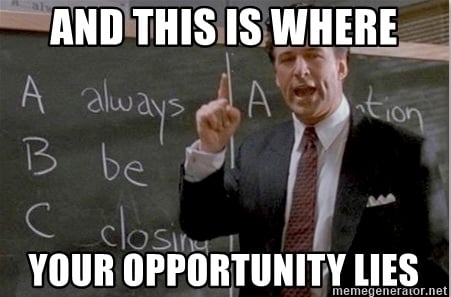
9. “Describe an area where you believe your competitors are outcompeting you in winning customers.”
Finding out a prospect’s perspective on where they think they’re falling short against their competition opens a discussion about the prospect’s pain points and problems. This sets you up to discuss your solution to that problem.
“I always like to ask them to 'describe an area where you believe your competitors are outcompeting you' because it is important to get a lead talking about their problems,” says Sebastian Schaeffer of dofollow.ie. “Following this, you can come in with a solution to an acknowledged problem that has come straight from the horse's mouth, rather than one you’re guessing at.”
10. “Walk me through your current process?”
Tailored to your product (for instance, “walk me through your current event scheduling process?”), this is a great way to get your customer to tell you details about their current situation. You’ll find out where the incumbent solution is falling short, what problems they’re having, and also what problems they’re not having—which is also important, as you don’t want to spend time pitching aspects of your product that your customer doesn’t feel address their needs.
Not only will understanding your prospect’s current processes help you better tailor your offer to their needs, but you’ll also find out more about their day-to-day experience. This makes it easier to build rapport and a relationship with the person you’re selling to, which will differentiate you from the crowd of faceless salespeople just trying to pitch their product.
11. “What are some of the frustrations you’re currently experiencing?”
A great question in its own right, but also a powerful follow-up to the previous question if they don’t elaborate on problems they’re having. This is an elegant way to get them talking about the pains their business is currently experiencing with the incumbent solution in place.
The key here is not to go after their current solution right away—or to suggest pains they might be facing—but to let them put their problems in their own words and to listen. Remember, people tend to get defensive when they feel like they’re being told they’re doing something wrong (particularly if the prospect helped to select the current solution), so rather than going after your competitor’s solution, just ask the prospect to outline what frustrations they’re facing in their own words.
Some salespeople will give a standardized pitch, showing off all their various features, regardless of what the prospect is actually looking for. So the trick here is to use this information to inform your sales pitch and personalize that interaction. Show the prospect you’ve heard them and understand their pain—and demonstrate that you have a solution to their specific problems.
12. “What happens if you don’t purchase a solution?”
For those familiar with SPIN selling, the previous question is a good way to get to the ‘P’: the ‘Pain’ your prospect is facing. This question is the perfect follow-up as it’s about moving the conversation along to address the ‘I,’ which stands for ‘Implication.’
If pain questions expose where the prospect is feeling a bit sore, a good implication question is where you apply a bit of pressure to make it hurt (in the nicest way possible). That means delving deeper into what will happen if your prospect fails to address the pain.
This could lead you into personal-pain question territory (which we’ll explore more below), as the implication might be that the prospect will find it difficult to succeed at their job. They might fail to attain a personal bonus if they fail to hit KPIs, they might look bad in front of their boss...they could even be out of a job.
By asking what will happen if your prospect fails to act, you’ll find out how compelling their need to make a purchase is (which will help you test the strength of the deal), and you’ll be that much closer to identifying the perfect way to position your offering to meet their needs. You’ll also increase the sense of urgency they feel to find a remedy to their pain.
Personal-pain questions
Open-ended personal-pain related questions help you establish trust and empathy with the potential customer. Their responses will help you build the case for your solution to their problems.
13. “The last time we spoke, you mentioned you were doing [X]. How did that go?”
If you’re speaking with a prospect you’ve been in touch with in the past, make sure to show you’ve been paying attention and that you are invested in building a relationship. This is also a good question to ask via email when picking up with a prospect after communication has gone cold.
This type of interaction can be made easier for your reps using a sales engagement platform like Mixmax that helps you set reminders about details from past conversations, and makes it easy to use them to personalize emails.
14. “What challenges do you face in your role?”
This is a good open-ended engagement question that helps initiate the identification of the prospect’s pain points. Use their responses to empathize with them and position yourself on their side. Ultimately, this gives you context so you can position your solution for them personally. This will help you identify how your product is going to make your prospect’s life easier and enable you to communicate those benefits more effectively.
15. “How do these challenges stop you from reaching your business objectives, and what implications will these challenges have if you don’t fix them?”
This is an engaging follow-up question to keep the conversation going. It’s better asked as two separate questions (if you ask somebody two questions, they’ll usually only answer one of them).
Ask how the challenges uncovered by the previous question are stopping the prospect from reaching their business objectives and then follow that up with a question about the implication if these challenges aren’t addressed to make the prospect feel the pain of inaction and increase urgency around your solution.
16. “What is currently slowing down your workflow?”
This question is a great conversation starter (whether on a call or via email) that yields information about pain points and helps position you as the customer’s ally. This question leads you to the following questions below.
17. “How would changing this process make your job easier?”
Use this question as a follow-up once the prospect has identified some kind of pain in their processes that you can help them solve. You’ll also gain insights into your prospects’ priorities so you can communicate on their terms.
Sebastian Schaeffer of dofollow.io says, “this question gives me insight into what someone prioritizes in their role and allows me to start tailoring an approach that is more likely to resonate with the individual.”
18. “What do you think these issues are costing you?”
Here’s another great question that helps you quantify the buyer’s pain to quantify the value gained from your solution in their terms.
“When they're explaining their pain points, I like to ask this question because I want them to feel some context for what it means to have this pain,” says Khabeer Rockley at The 5% Institute. “This gives the pain a price, either monetary or time-wise. From there, I just need to ensure my product or service comes in at a lower price than their pain’s price, and I'm onto a no-brainer sale.”
19. “If we don’t get this fixed, how will it impact you personally?”
Often a prospect’s goals and needs are different from those experienced by the company. Your contact likely has career and advancement goals, for example. Starting a conversation about their personal goals, pains, and fears helps to build the relationship further, builds more empathy, and positions you as one who can provide a solution to their personal job goals.
Objection-based questions
It’s natural to be apprehensive about objections arising during the sales process, but these are actually a good sign. With a few exceptions, a prospect who doesn’t raise any objections probably isn’t serious. That guy on the end of the phone who agrees with everything you say, asks zero questions, and doesn’t challenge you? They might seem like a prospector’s dream, but they’re more likely a timewaster.
Excelling at sales is about mastering how you handle objections, and using them as opportunities to learn more about your prospect’s situation and their current solution, and test the strength of your potential deal. Don’t rush in to shut them down, or offer your solution as a Band-Aid, when objections arise. Listen and let your prospect talk, which should allow you to discover whether there are more objections lurking under the surface.
With that in mind, here are some good questions for handling objections:
20. “I’m sure you have a good reason for saying that. Do you mind if I ask what it is?”
This works because it validates their concerns. It’s a straightforward response that works for almost any objection and aligns you with the prospect (they have a “good reason”). But it creates a space to discuss it in a non-confrontational way. You’re curious about their thought process here because you want to understand if you can add value and solve their problems.
21. “If I could show you a way to address that concern, what would stop you from moving ahead with this?”
With this line of questioning, you’re acknowledging the objection and not fighting them on anything. Instead, you’re testing how genuine their objection is. If you ask this and get five more objections, it’s possible these are brush offs rather than true objections. Or your prospect is really determined not to work with you at this time.
However, if they explain that their objection is the main barrier to making a deal, you now know it needs to be taken very seriously, and can begin unpacking why it’s such a barrier. Ask follow-up questions like “what would we need to do to convince you we can overcome [objection] so we can do a deal?” This takes the objection and turns it into a list of things you need to do in order to advance the deal.
22. “When you say you don’t have the budget, what do you mean by that?”
This budget-based objection-handling question can easily be adapted to cover a range of other objections. The important thing is, you’re digging deeper to understand what they mean in their own words.
It’s easy as a salesperson to hear the words “no budget” and head straight for the emergency exit. But often objections like these mean different things to different people. For instance, “no budget” might mean “we don’t have the budget this quarter” or “we won’t have a budget for a project like this ever,” which are two very different things. You won’t know which it is unless you drill deeper by asking an open question like this. It’s a good way to get to the bottom of things with minimal friction.
Next-step questions
Next-step questions help you move the deal along, and these open-ended questions are perfect for the transition towards closing the deal:
23. "What features do you need from our product that you haven't seen yet?"
It helps to know what your prospect is still unsure of, what they are still focused on, and what information you need to provide moving forward. Mykola Tymkiv of MacKeeper goes further:
“This opens up a new avenue of thinking for the prospect. You've told them quite a bit about what your product does. Give them a chance to stop and consider what they haven't yet seen. Chances are your product actually does that. At worst, you'll have valuable info to pass along to the product team. Nothing like telling a former prospect that your product has been upgraded specifically for them!”
24. “Before ending this call, what questions or concerns have I not addressed yet?”
What objections are still on their mind? The prospect’s response to this type of question helps you with your next engagement. Then, for the next call or email, you’ll have their language to use in addressing their concerns.
How to get more responses to your sales engagement questions
Asking open-ended questions like those above will help your reps to:
- Test the strength of deals earlier and better prioritize those with a better chance of closing
- Understand the prospect’s problems to position your solution as the clear choice
- Move opportunities through the sales cycle faster, using the implications of pain points to increase the sense of urgency
- Build better relationships and rapport with prospects through developing a better sense of their personal goals and concerns
- Avoid surprises later in the deal by identifying possible blockers earlier (and having the chance to turn them into advocates)
But today’s prospects expect to deal with your reps at their convenience, using their platforms of choice. For example, this might mean they’d prefer to answer some of the early qualifying questions over email. To better help your account executives ask the best sales engagement questions, you’re going to need to give them the best sales engagement tools to enable sales automation.
Using sales engagement tools, like Mixmax, empowers your sales reps to more easily interact and communicate with prospects through things like sequences, templates, and surveys. Sales leaders can build processes to allow deals to follow a specific workflow based on providing clear insights into what approaches are working—and which aren’t.
A platform that seamlessly integrates Gmail with the most commonly used sales tools (like Salesforce, Zoom, and Slack), ensures your AEs activities aren’t juggling multiple tabs and, more importantly, that data is always accurate and consistent. This cuts down the busywork and lets your salespeople focus their time doing what they do best: selling.
Here are some key features of Mixmax that can help your sales team to make the best use of the advice in this article:
Templates
They’re easy to build, save, customize, and send to your prospects using Mixmax.
Quickly insert your open-ended sales engagement questions into email templates. Analyze the response rates of these templates and then increase the use of the best-performing templates for maximum impact.
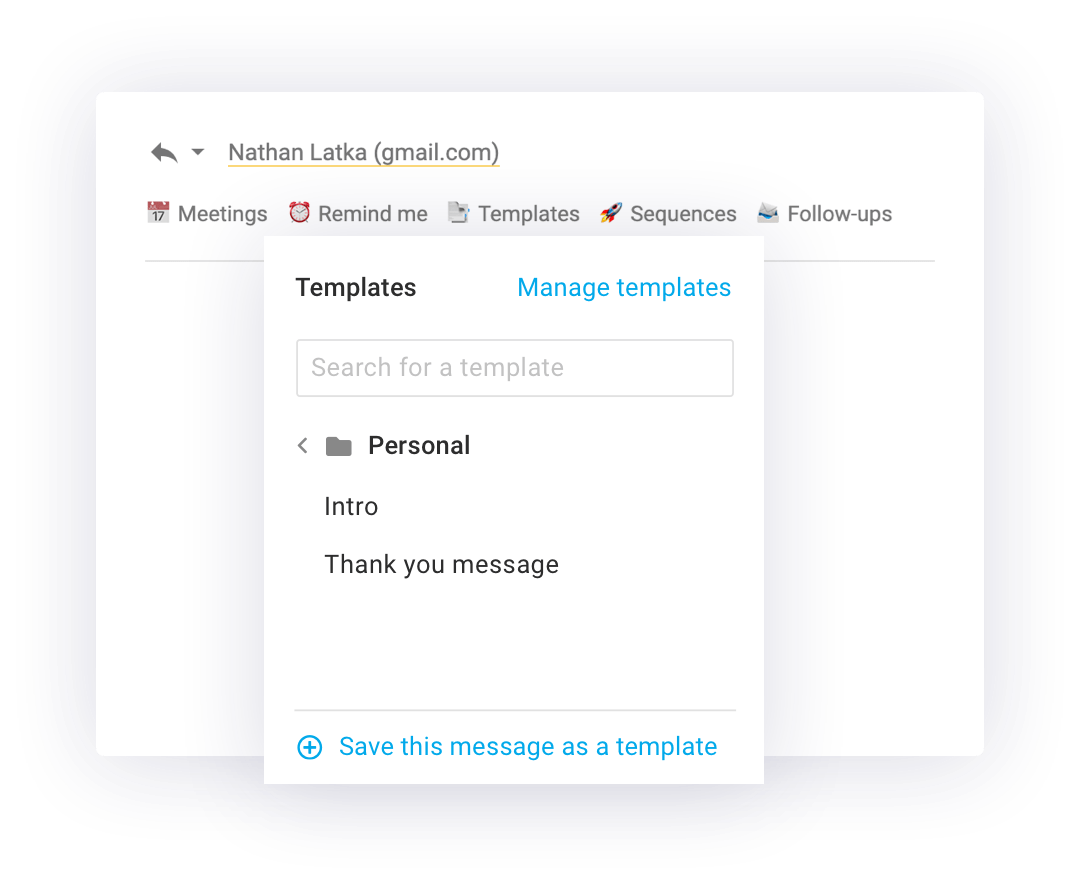
Polls and surveys
Mixmax makes it easy to capture open feedback responses so you get those long-form, thoughtful answers you are looking for. This means you could use these to ask some of the open-ended sales engagement questions mentioned above without limiting the answers your prospects give you.
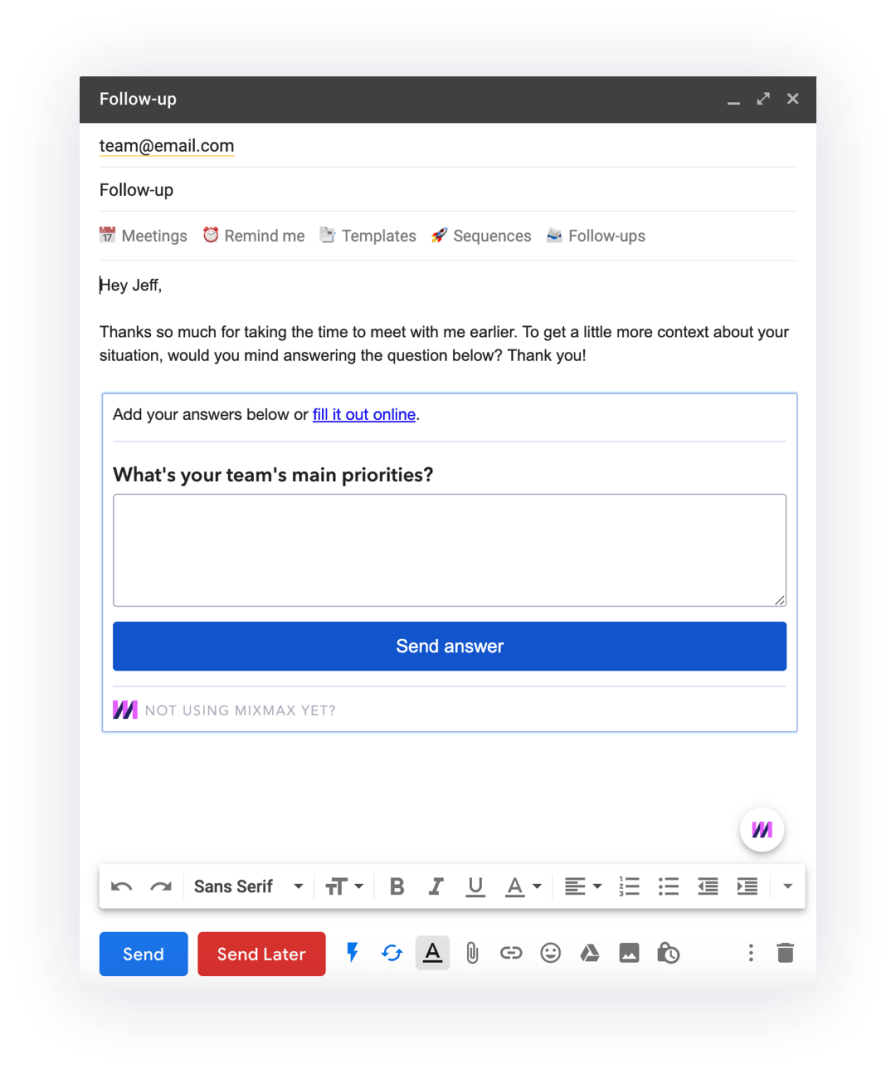
One-click meetings
While polls and surveys will help your reps using some of the above questions over email, the most valuable conversations you’ll have with prospects will be over a call. But pinning down prospects and getting them to commit to a call can be a tricky process, even once you’ve built a relationship.
Mixmax makes it easy for customers to schedule time with reps in one click. Sales reps can spend less time coordinating meetings and more time preparing for them. Anything that reduces friction in the selling process is a huge advantage for reps as every small instance of friction is a potential drop-out point for a prospect.
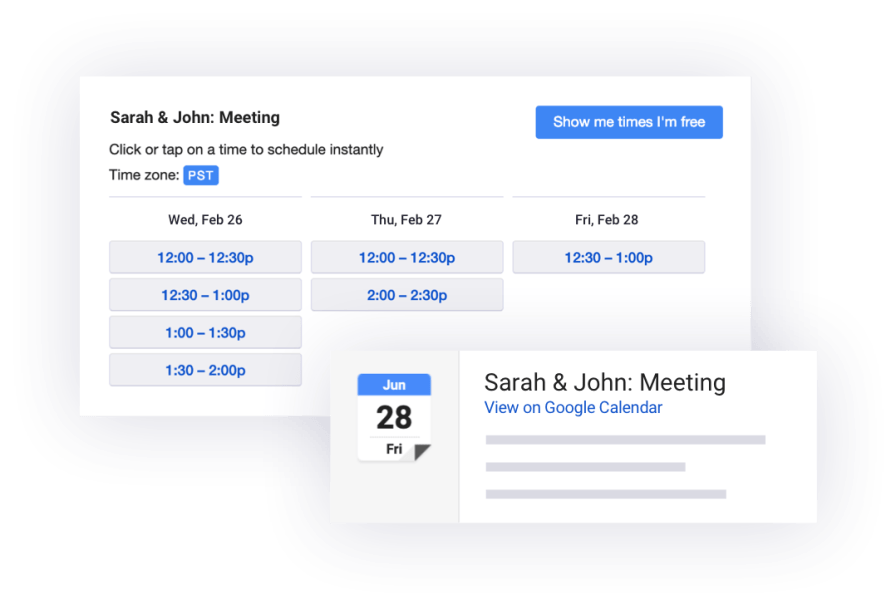
Sidechat
Without leaving your Gmail inbox, @mention anyone on your team to quickly share buyer responses>, so you can get instant feedback from your team and move faster on the deal.
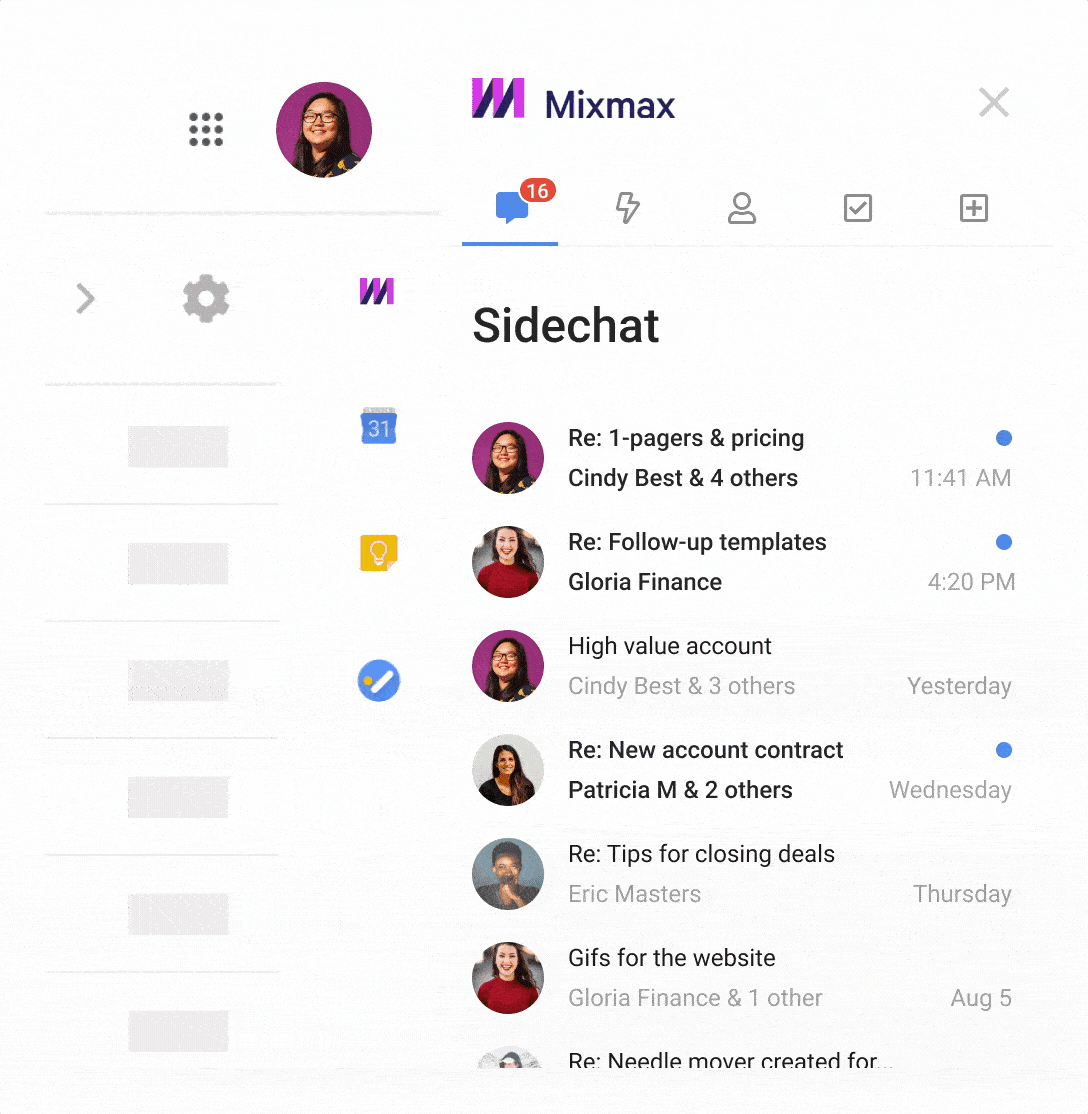
Using open-ended sales questions as part of sales engagement
Using questions like the ones given in this article will help you to close deals faster and enable your team to better prioritize the opportunities that stand the best chance of closing.
Open-ended sales engagement questions like these also help build rapport with your customers and play a key role in establishing meaningful relationships. But they’re not just for phone calls: these types of questions can even work well over email if you’re using the right sales engagement platform and sales automation tools.
Mixmax will help you easily embed your open-ended questions into email templates, surveys, chats, and other automated communication channels while capturing and reporting valuable insights on how your prospects are engaging.
Frequently asked questions about open-ended sales engagement questions
We get a lot of questions about sales engagement. Here are some of the top questions we hear:
What is sales engagement?
Sales engagement is a matter of enhancing the communication between you and your prospect. Sales engagement boosts meaningful, two-way conversations that generate more information about the deal.
Sales engagement involves not only open-ended questions but includes customer-facing automated actions. Software platforms for sales engagement help sales teams increase engagement with their customers by removing unnecessary manual intervention with things like templates, sequences, and integrations with their technical stack.
What is sales engagement compared to sales enablement?
Whereas sales engagement is about empowering sales reps to more easily interact and communicate with prospects by automating and optimizing processes, sales enablement is more about internal processes that support the job of the sales team, including training, coaching, and buyer persona development.
How do I keep track of all my prospects’ responses to my sales engagement questions?
Consider using a sales engagement platform that automates your sales engagement questions, automatically collects the information, and reports on what is working.
You deserve a spike in replies, meetings booked, and deals won.
Sign up to The Mixer newsletterSign up to our newsletter to get fresh sales content delivered right to your inbox.
Recent Posts
Once upon a time in a galaxy far, far away, Yesware was the go-to solution for AEs doing email outreach.
Times change.
And, while it’s made a valiant effort, Yesware just hasn’t been agile enough to maintain its position.

Sure, Yesware bills itself as a sales engagement solution but, truth is, the features leave a little something to be desired.
Ok, a lot.
Truth is, these days, it’s just not part of the sales engagement conversation anymore.



